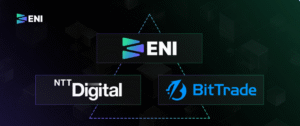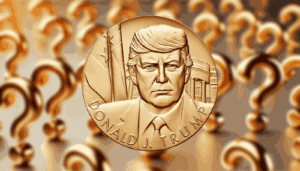
NFTs, or non-fungible tokens, have become a popular topic in the world of blockchain technology and cryptocurrency. While they are commonly associated with digital art and collectibles, NFTs also have the potential to revolutionize the concept of digital identity. In this article, we will explore how NFTs can be used to create a more secure, decentralized, and user-controlled digital identity system.
What is Digital Identity?
Digital identity refers to the online representation of an individual or entity. It includes personal information such as name, age, and contact details, as well as other data such as financial records, social media profiles, and online activity. In today’s digital age, digital identity is becoming increasingly important for activities such as online banking, e-commerce, and social interaction.
Challenges of Current Digital Identity Systems
Current digital identity systems are often centralized, meaning that personal information is stored on a server controlled by a single organization. This creates a single point of failure and makes personal data vulnerable to hacking, data breaches, and other forms of cyber attacks. Furthermore, users have limited control over their digital identities and are often forced to share personal data with third-party organizations in order to access online services.
How NFTs can Revolutionize Digital Identity
NFTs have the potential to revolutionize digital identity by creating a more secure, decentralized, and user-controlled system. Here are some ways that NFTs can be used for digital identity:
Unique Digital Identity
NFTs can be used to create a unique digital identity for each individual. This can include personal information such as name, age, and contact details, as well as other data such as educational and professional qualifications, and online activity. Each NFT can represent a unique digital identity that is owned and controlled by the individual, rather than a centralized organization.
Secure Data Storage
NFTs can provide a secure way to store personal data. By leveraging blockchain technology, NFTs can provide a tamper-proof record of ownership and transaction history, making personal data less vulnerable to hacking and cyber attacks.
User-Controlled Access
NFTs can also give users greater control over their digital identities. Instead of relying on centralized organizations to store and manage personal data, users can keep their data in their own digital wallets and control who has access to it. This can provide a more user-centric approach to digital identity, where users have greater control over their own personal data.
Decentralized Verification
NFTs can also be used for decentralized verification of personal data. For example, an individual can create an NFT that represents their educational qualifications, and the authenticity of the NFT can be verified by the educational institution that issued the qualification. This can provide a more secure and trustworthy way to verify personal data, without relying on centralized organizations.
Self-Sovereign Identity
Finally, NFTs can enable self-sovereign identity, where individuals have complete control over their digital identities. This can provide a more democratic and user-centric approach to digital identity, where individuals have the power to own, manage, and verify their own personal data.
Challenges and Risks
While the potential benefits of NFTs for digital identity are significant, there are also challenges and risks that need to be addressed. Here are some considerations:
Environmental Impact
The use of blockchain technology, which underpins NFTs, has been criticized for its high energy consumption and environmental impact. As NFTs become more widely used for digital identity, it is important to consider the environmental impact of their use and explore ways to minimize their carbon footprint.
Regulatory Framework
The use of NFTs for digital identity raises questions around privacy, data protection,
and regulatory frameworks. It is important to establish clear legal and regulatory frameworks to ensure that the use of NFTs for digital identity is in compliance with data protection laws and regulations.
Technical Challenges
There are also technical challenges to consider when using NFTs for digital identity. For example, interoperability and scalability issues may arise when different NFTs need to be combined to provide a complete picture of an individual’s digital identity. There may also be challenges in ensuring the security and privacy of personal data stored on the blockchain.
Adoption and Education
Finally, the adoption and education of NFTs for digital identity will require significant effort and investment. Users may need to be educated on the benefits and risks of using NFTs for digital identity, and organizations will need to invest in the development and implementation of NFT-based digital identity systems.
Use Cases for NFTs and Digital Identity
The potential use cases for NFTs and digital identity are vast and varied. Here are some examples:
Decentralized Social Media
NFTs can be used to create decentralized social media platforms that enable users to control their own digital identities and data. Users can use NFTs to prove their identity and reputation within the platform, as well as control who has access to their personal data and activity.
Personalized Marketing
NFTs can also be used for personalized marketing and advertising. By using NFTs to represent a user’s interests and preferences, marketers can create more targeted and personalized campaigns that are tailored to the individual’s unique digital identity.
Secure Online Voting
NFTs can be used to create a secure and transparent online voting system. By using NFTs to represent a voter’s identity, votes can be securely recorded and counted on the blockchain, ensuring a tamper-proof and trustworthy voting process.
Cross-Border Payments
NFTs can also be used for cross-border payments and remittances. By using NFTs to represent a user’s identity and financial history, users can securely transfer funds across borders without relying on centralized intermediaries.
Conclusion
NFTs have the potential to transform the concept of digital identity, creating a more secure, decentralized, and user-controlled system. By leveraging blockchain technology, NFTs can provide a tamper-proof and transparent record of ownership and transaction history, enabling self-sovereign identity and decentralized verification. While there are challenges and risks to consider, such as environmental impact and regulatory frameworks, the potential use cases for NFTs and digital identity are vast and varied, from decentralized social media to secure online voting and cross-border payments. As the adoption of NFTs and blockchain technology continues to grow, the future of digital identity looks set to be decentralized, transparent, and user-centric.
I’m a highly experienced and respected author in the field of Cryptocurrencies. I have written numerous articles and books on the subject, and my work is highly regarded by my peers. I have a strong understanding of the technology behind cryptocurrencies, and I am always up-to-date with the latest developments in the space. I am also an active investor in cryptocurrencies, and I have made a significant profit from investing in this new asset class. In addition to my writing and investment activities, I am also an active member of the cryptocurrency community, and I frequently speak at industry events.









